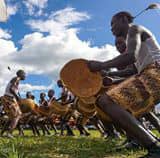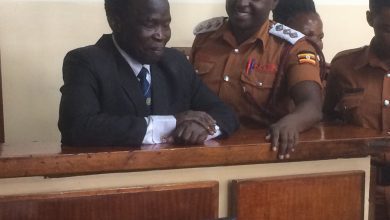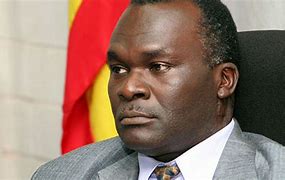
CulturesGlobal Politics
UGANDA: AMB. DR. OLARA OTUNNU AND CHIEF JUSTICE OWINY DOLLO CHIGAMOI UNVEILED ACHOLI EDUCATION FUNDS
Over UGX 1 billion so far have been collected by the Acholi community from within the country and those who are living in the Diaspora,
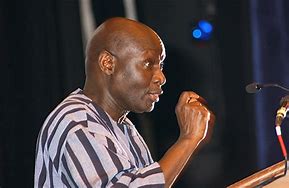
Chief Justice Alphonse Owiny Dollo Chigamoi and former UN Under-Secretary Amb. Prof. Dr. Olara Otunnu Launched Acholi Education Funds, (Gurre Pongdwongo).
Over UGX 1 billion so far have been collected by the Acholi community from within the country and those who are living in the Diaspora, Dr. David Martin Alike before he passed on in April 2024 had penned down in his will that all the condolence contributions during his sendoff be a donation for Acholi Education fund Dero Kwan
GULU CITY- FRIDAY 17, APRIL 2024.
Acholi totem is an Elephant that signifies them as the giants in the region and they have been regarded as powerhouse and political kingmakers in Uganda’s political domain. However, they have been reduced to the rags and the poorest community in Uganda according to the Poverty Index of 68 percent, second in the region.
December 27-29, 2023. The Co-chairms Amb. Dr. Olara Otunnu and Chief Justice Owiny Dollo Chigamoi organized grant Gurre Pongdwongo Kacoke Madit which gather all Acholi form all walk of life for the revival movement of (Roco Paco) Unity to developed Acholi community, which attracted over two thousand people, and they resolved to embark (Dero Kwan pa Acholi) .
Ms. Christine Lutara, head of finance for Gurre Pongdwongo, Roco Paco Company Limited revealed that Acholi Education Funds, Dero Kwan, has attracted well-wishers, Acholi within the country and Acholi living in Diaspora who collected during the luncheon that realized 31 people each donated UGX 10 million totaling to UGX over 300 Million on the first day of the launching on April 17, 2024, she elaborated.
So far Dero Kwan funds raising is over UGX 1 billion , Justice Owiny Dollo Chigamoi one day when appeared on talk shows in Radio Rupiny FM, after his appealed Acholi community sent in their contribution UGX 1million.
“When we went to the Pongdwongo meeting late last year 2023, after the meeting, the members agreed to call for Pongdwongo resolution. The two co-chairs, Amb. Dr. Olara Otunnu and Chief Justice Owiny Dollo have been confirmed to be Interim Co-Chairs for two years; the resolution was adopted during the luncheon.” Christine Lutara argued.
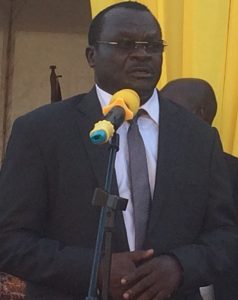
Add on that the Co-Chairs, Chief Justice Owiny Dollo Chigamoi and Amb. Olara Otunnu disclosed that the Gurre Pongdwongo which resolved to form a body vanguard stirring the newborn baby had to register the company or organization to be the vehicle of Gurre Pongdwongo.
The successful implementation of these objectives is expected to bring about significant positive changes, including a vibrant Acholi culture, responsive local governance, improved education quality, increased employment opportunities, enhanced maternal and child health, heightened social protection, boosted labor productivity, improved agricultural production, increased income generation, better natural resource management, and enhanced infrastructure development.
Prof. Obwoya Kinyera Sam is heading the strategies and objectives he highlighted that the strategic plan is broken down into twelve key areas, each designed to achieve specific outcomes aligned with the overall goal. These strategies encompass cultural heritage promotion, human capital development, health service enhancement, good governance promotion, economic empowerment, natural resource management, research, innovation, technology leverage, infrastructure investment attraction, private-public partnerships, and stimulation of business growth and innovation.
Thematic Area 1 focuses on People, Heritage, and Leadership, with strategies addressing complex challenges through the region’s rich cultural heritage, human capital potential, and natural resources. Collaboration and commitment from various stakeholders are essential for successful execution.
Thematic Area 2 aims to “Increase Access to Quality Social Services” and emphasize human capital development. The strategies include community sensitisation, education promotion, training programs, integration of peace education, and leveraging technology for educational delivery. Additionally, it addresses access to quality health services and social issues such as substance abuse.
Thematic Area 3 targets “Increase Sustainable Use and Productivity of Natural Resources” with “Industrialization; R&D/STI; Private Sector” as the key driver. The strategies focus on economic empowerment, natural resource management, and leveraging research, innovation, and technology for agriculture and business growth.
Thematic Area 4, “Private Sector Development, Economic Infrastructure and Services,” aims to “Increase Access to Economic Infrastructure and Services” with “Infrastructure Investments” as the key driver. The strategies include maintaining and upgrading existing economic infrastructure, public-private partnerships, and stimulating business growth and innovation.
In essence, the Rocco Paco Strategy presents a holistic and well-structured approach to community-led development, intertwining cultural preservation and development with economic growth, education, health, and infrastructure development for the prosperity of the Acholi people.
The Implementation Strategy presents a comprehensive blueprint aimed at empowering the Acholi communities in addressing key challenges and fostering sustainable socio-economic development. Emphasizing a bottom-up approach, the strategy prioritizes self-determination and local participation in decision-making processes. Central to this strategy is the establishment of the Rocco Paco Foundation Ltd to mobilize funds, provide grants, coordinate efforts among diverse stakeholders, and ensure accountable and inclusive governance.
Key stakeholders identified for successful implementation include the central government, district local government, Acholi Parliamentary Group, cultural institutions, Elders forum, private sector, civil society organizations, and development partners, each offering unique resources and perspectives. Capacity strengthening for implementing partners is highlighted, along with the importance of formal and informal institutions in facilitating economic development.
The strategy also emphasizes monitoring and evaluation (M&E) to track progress, ensures accountability, and facilitate learning. The M&E framework includes specific objectives, guiding principles and arrangements for monitoring implementation and evaluating impact.
Thus, as a result of the agreed Gurre Pongdwongo, which agreed that Acholi education, (Dero Kwan pa Acholi) be put in place, the Co-Chairs Amb? Dr. Olara Otunnu and Chief Justice Owiny Dollo Chigamoi have moved out for sensitization and mobilization of the grassroots community in Acholi Sub Region under the team Roco Paco and Rayo Lim pi Kwan where they have moved to 11 chiefdoms in Acholi Sub Region, beginning from Puranga Chiefdom.
Among other things, apart from collecting education funds, the resolution adopted from the meeting at Acet Primary School, when the co-chairs were meeting Puranga Chiefdom 47 clans’ leaders, was resolved that in each household, the head of the family would collect funds according to a person living in the household.
Ms. Christine Lutara, stresses that in line with education, we have to revise the former education body school, and we have earmarked St. Joseph’s College – Layibi, Sir. Samuel Baker Senior Secondary School, Sacred Heart Girls’ Secondary School, Gulu High School, and Y.Y Girls Secondary School.
The Gurre Pongdwongo also engaged in reviving cultural institutions, (Roco Paco. Doro kaka me Acholi)) the decadent Acholi traditional culture where we are coming up with Acholi By-Law, the latter mentioned that the Co-Chairs have traversed 11 chiefdoms.
“The Co-Chairs have registered Roco Paco Company Limited and our Bank is Bank of Africa for Rayo lim me, Kwan”.
Collecting money from each clan’s members in Acholi we have a receipt book. Each book covers 300 members, according to Acholi Population Demography by 2024. Before the forthcoming population census, the Acholi community was estimated to be about 3 million. This means our bare minimum quarterly meeting that took place on 9th April 2024. So far 38 people have each contributed UGX 10 million a week after Dero Kwan was launched, after registering and contributing that we have realized from within and Acholi living in the Diaspora, the co-chairs are appealing to the Prime Minister of each Chiefdoms, to make sure through their clan’s chairman the contribution are to follow, since in each routine move by the co-chairs, they are giving book and receipt for the collection of education funds.
Ms. Christine Lutara notes that when each clan has contributed the funds, the clans’ leaders and the prime Minister of the chiefdom confirm that indeed each clan’s member has participated, this will be according to the receipt book which indicated that 300 persons are paid each UGX 1,000 for education funds.
The clan chairman and the prime minister of the chiefdom have to acknowledge that they have contributed education funds fees, and their money has to be committed to the Bank of Africa
Ms. Christine Lutara disclosed that there is a strategy the co-chairs have put in place for the Acholi Centre of Education from Acholi Sub Region to look at and scrutinize the best students and pupils to benefit from scholarships which will be given to the best-performing students. But, this is based on the character of the students and their ability to perform well in class.
She argues that the former UN Amb. Olara Otunnu and Chief Justice Owiny Dollo Chigamoi also the benefits of the Acholi scholarship, and the scholarship through Dero Kwan we are giving.
We are not giving scholarships because you are the best, but do you also have informal, non-formal education, are you well-behaved from home, do you respect society? We are going to look at three years’ record. We are giving (Dero Kwan) to sons and daughters from the soil, to study in Gulu University. But we will make sure Gulu University meets the standard of the best-performing Universities in the region.
Another area we are engaging in is Roco our children through Wang OO. By 2003, according to the East African News, the report says, Acholi had 3,000 scholars with PhD, the biggest in the region; can we tap the opportunity and reach them, and how this can be through TikTok communication?
Primary Education Strategic Plan
Primary school enrolment remains significantly low compared to other regions. According to UNHS 2019/20, the Net Enrollment Rate at primary schools was 73.9% (74.6% for males and 73.3% for females) compared to the national average of (78.9% for males and 81.1% for females). In 2016/17 net enrolment was 77.2% (77.7% male and 76.9% female) in Acholi.
However, girls’ enrolment in primary education is lagging behind that of boys in the region. The low enrolment is attributed to numerous factors which include among others: poverty, insecurity associated with cattle rustling along the Kitgum, Agago border with Karamoja, negative attitude towards education, and engagement in domestic work especially among girls.
Affordability and inclusivity.
According to UNHS 2016/17, 57.8% of children in Acholi were deprived of “School fees, uniform and scholastic materials” because they cannot afford it. Access to primary school education is also constrained by a shortage of primary schools in the region. To date, some parishes (at least 16) do not have government-aided primary schools contrary to the government policy of a public primary school per parish.
Low staffing level in primary schools.
The average pupil-to-teacher ratio in Acholi is also above the national average at 61:1 in comparison to the national average of 43:1. This indicator remains so alarming in lower primary grades compared to upper primary. Other indicators such as pupil desk ratio and pupil-stance ratio remain very low at 7:1 and 85:1 respectively.
School dropout rates are high in Acholi.
The survival rate for grade 7 is only 28.3% (see Figure 2). The persistent challenges of low enrolment and the absence of flexible alternative education opportunities to meet the real needs of the population have not improved the situation. In some communities, education is not given much value, and children, both boys and girls, are withdrawn to support the household livelihood economy.
Performance indicators related to Quality, Efficiency, and Effectiveness remain significantly low in comparison to the national average.
The region continues to register the worst performance in PLE, with a P.7 pass rate of 21.4% only. Most rural primary schools in the Acholi region have consistently posted poor PLE results over the years. For instance, the 2020 PLE results released by UNEB indicated most rural schools in the Acholi region performed poorly and were ranked between 102 and 162, out of the 169 LGs in the country.
Secondary Education
The Gross Enrolment Ratio (GER) in Secondary Schools in Acholi was a paltry 17% (21% for males and 14% for females) compared with 25% at the national level.
According to the UBOS 2017, a majority (95%) of persons aged 13 years who ever attended school in the Acholi region did not complete primary school compared to the national average (90.4% net completion rate). Completion of primary school is important for the transition to lower secondary education. There are 47 out of the 119 (39.5%) secondary schools offering Universal Secondary Education (USE) in the region. The total enrolment is relatively higher in Kitgum and Gulu and lowest in Nwoya,
Figure 3.
This is attributed probably to a better learning environment; an influx of refugees from South Sudan, preference for old schools by students from the neighboring districts of Lamwo, Pader, and Agago, while in Nwoya it is due to a relatively low population and fewer secondary schools.
However, the region also has many sub-counties (44 out of 64, i.e. 68.7%) without a government-aided secondary school compared to the national average of only 9.3% without a public secondary school.
The sub-counties without a public secondary school by 2019. The region has the lowest number of secondary schools compared to other regions of the country. As of 2017, the total number of Secondary schools (both private and government-aided) is 119
(see Table 5 in the Appendix II).
Access to post-primary education remains low.
Access to post-primary education remains low because of low enrolment, poor performance in primary and low transition from primary to secondary poverty (lack of tuition fees- affordability) that inhibits support to students. An average of 63% of children eligible to enter secondary school following completion of primary education in Acholi is currently not attending secondary school. Given the current gaps in the number of teachers, classrooms, latrines, teaching and learning materials, and other school facilities, if secondary school enrolment in Acholi increases, these supply gaps will be greatly exacerbated as there are not enough schools and teachers to meet the demand.
Low secondary educational attainment.
This is attributed to poverty, inadequate staffing, low literacy, loss of confidence, few role models in the communities, and lack of motivation to remain in school. This not only increases household vulnerability but limits the opportunities to diversify livelihoods and engage in the larger economy.
The worst Uganda Advanced Certificate of Education (UACE) and Uganda Certificate of Education (UCE) results for the last 30 years (Uganda National Examination Board) are from the region.
This is largely attributed to high levels of poverty and its associated effects on education in the region, and low-quality secondary education in the region. The poor education at the ‘O’ level and other distractions may also prove discouraging to students and account for failure to join ‘A’ level or equivalent levels of education since the poor level of education spells a future of doom.
The poor school performance is partly attributed to low household expenditure on education. According to UNHS 2019/20 households in the Acholi region incurred the least expenses for primary school (UGX 159,000, on average) and secondary (UGX 688,000, on average) compared to the national average (UGX440, 000), and (UGX1, 396,000), respectively. For example: Kampala households spent UGX 1,338,000, Bunyoro UGX 518,000, Lango’s UGX 313,000, and West Nile’s UGX 245,000, on average for primary school.
Many households are due to high levels of poverty, therefore, unable to pay for projects, trips, and other secondary school expenses; therefore, the children of those households miss learning opportunities that come through such school programs. The missed learning opportunities may account for making the grades for higher education.
Higher Education
Acholi region hosts several tertiary institutions, including Gulu University, Uganda Management Institute, the University of the Sacred Heart Gulu, Uganda Management Institute, etc. These institutions offer higher education to all public and private sector service providers in Acholi and beyond.
Low enrollment into institutions of higher learning.
Students from the Acholi region who sit the Uganda Advanced Certificate Education (UACE) are less likely than students from other regions of the country to get admission to tertiary institutions due to low attainment of grades required for admission. See for examples
Tables 6, 7 & 8 in Appendix II,
Where admissions on government sponsorship are heavily skewed for Diploma at Public Tertiary Institutions; and Degree Programs at Public Universities (Makerere and Gulu Universities).
Under the Diploma programs, 16 students from the Acholi region were admitted on government sponsorship in the academic year 2022/23, accounting for 1.3 percent.
Makerere University Degree admitted 30 students from the Acholi region to degree programs on government sponsorship in the academic year 2022/23, accounting for 4.9 percent. The low-quality education and enrolment at secondary school tend to undermine enrolment in higher education. Gulu University admitted only 6 students from the Acholi region on government sponsorship in the academic year 2022/23, accounting for 9.0 percent.
Educational attainment remains low in Acholi.
According to UBOS, 6.2 percent of the population aged 13 years and above had attained O’ level secondary education or lower secondary education and 2.5 percent had attained upper secondary education (Senior six) in Acholi lower compared to the national average
(Table 9 in Appendix II).
Low vocational attainment is attributed to a negative mindset for vocational education and a limited number of skills development centers in the region, which are lagging due to several challenges namely, inadequate equipment, inadequate Human Resources (tutors), and inadequate infrastructure (lecture rooms, labs, and staff houses).
To sum up, the education level is low in Acholi because of limited early life (3-5 years) education foundation (few nursery schools), high school dropout rates, low enrolment at the secondary school level, and limited access to tertiary education due to low attainment of grades required for admission to Higher education mainly due to abject poverty and poor quality of education in the region.
Error! Filename not specified.

